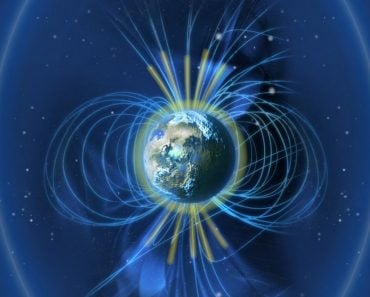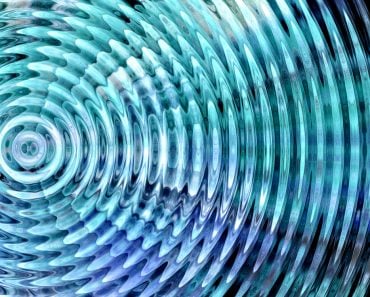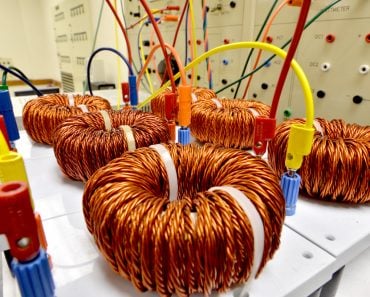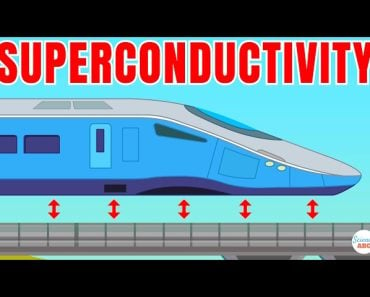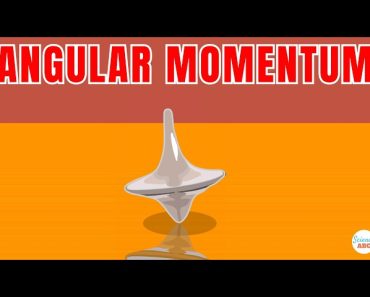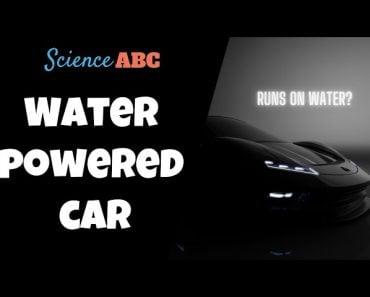Magnetohydrodynamic or MHD drives are a theoretical solution for propelling vehicles by placing them in electromagnetic fields.
If you place two magnets with their like poles facing each other, pushing one towards the other causes the second to repel. While the basics of magnetism have been instilled in us since childhood, we often overlook its implications and potential benefits. Take for example, the case of ships.
Conventional practices involve the use of bladed contraptions, such as propellers and turbines, to make them move. What if I told you that you could move ships in water with nothing but magnets and some electricity? The secret lies in MHD drives.
Recommended Video for you:
Magneto-hydrodynamic Drives (MHD Drives)
That’s quite a mouthful for a name!
However, magneto-hydrodynamic or MHD drives are a simple application of electromagnetism. When a conducting fluid is subjected to both electric and magnetic fields, the fluid experiences motion that is perpendicular to the two fields. This is known as Lorentz’ force and can bring about motion without the need for moving components. Let’s examine this concept in detail.
Lorentz’ Force & Fleming’s Left-hand Rule
It was found that a force acts upon a charged particle placed in mutually perpendicular electric and magnetic fields. This force pushes the particle in a direction that can be predicted by Fleming’s left-hand rule.
Fleming’s left-hand rule demonstrates a three-dimensional space, where the outstretched thumb, index and middle finger represent mutually perpendicular directions.

Assuming that the magnetic field is determined by the index finger, and the electric field is determined by the middle finger, the Lorentz’ force will act along the thumb.
This Lorentz force can be used to propel ships, as we shall demonstrate further.
Design And Construction Of MHD Drives
In order to achieve propulsion using Lorentz’ force, the conducting fluid must be constantly subjected to an electromagnetic field. This electromagnetic field can be generated through the use of electromagnets and superconductors. The Lorentz’ force acts on this fluid, which by equal and opposite reaction, pushes the magnet in the direction opposite to that of Lorentz’ force.
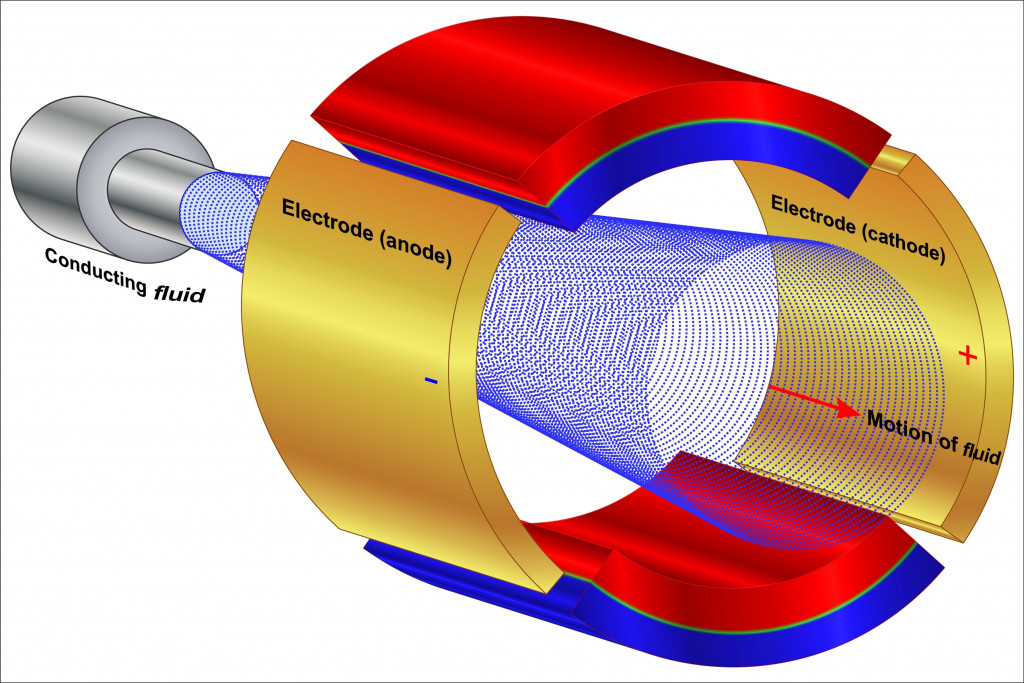
MHD-propelled ships are favorable due to the presence of sea water, which is a great conductor of electricity and magnetic forces. However, conventional ships sail ‘over ’water. Due to this, it’s not possible to subject sea water to a set of two mutually perpendicular forces that would bring about propulsion in a third direction. This would be possible only if water flowed ‘through’ the ship, rather than under it.
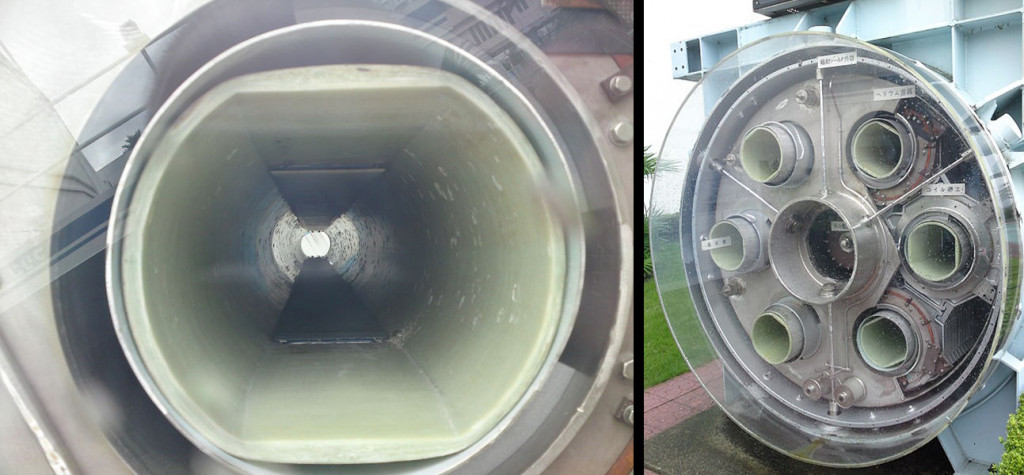
Thus, ships can be designed with water ducts that channelize water through the hull of the ship, where it is subjected to both electric and magnetic fields. These fields are generated by means of strong electromagnets and superconductors built into the hull of the ship.
When they are activated, the Lorentz’ force pushes sea water aft of the ship. As these magnets are fixed to the ship’s structure, the sea water casts an equal and opposite force, propelling the ship forward.
Advantages And Disadvantages Of MHD Drives
In theory, MHD drives present a lot of advantages that make them suitable for widespread use. To begin with, the absence of a conventional propeller system eliminates the need for large engines needed to power it.
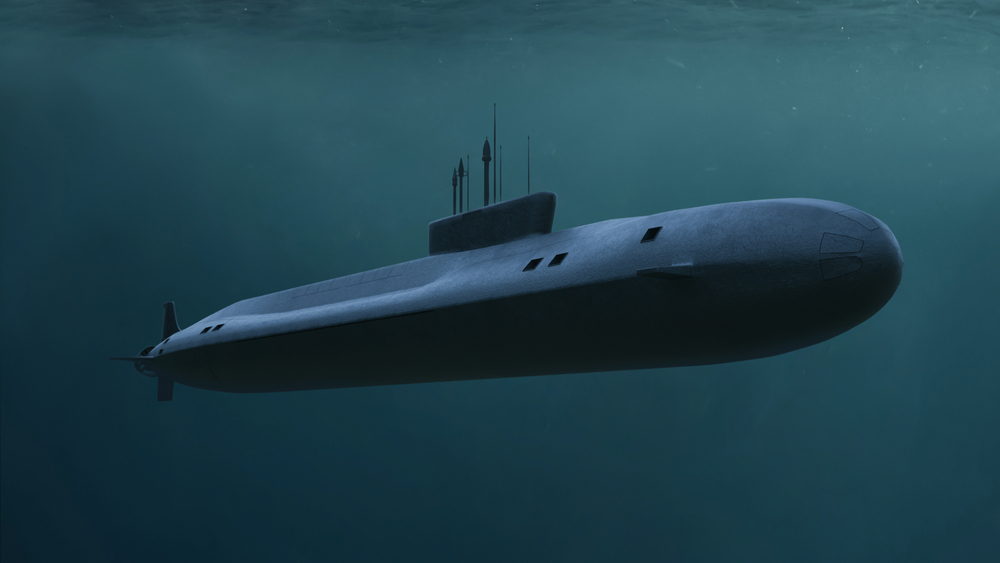
Eliminating the propeller and associated moving components makes for lighter watercraft, thus reducing frictional losses, thereby inherently improving efficiency. Another important advantage of such an MHD drive is the significant reduction in noise, which otherwise causes ships to be easily detected in vast oceans. This can come in handy for stealth operations, as the movement of water through the ship’s ducts makes no noise.
However, most of these advantages are overshadowed by the disadvantages of such a system. Test vehicles that ran on MHD drives have shown several issues that make large-scale deployment impractical. Amongst the most common issues is the generation of electromagnetic fields strong enough to propel large ships at functional speeds.
Generating such massive fields consistently for long time periods was found to be very energy intensive. Due to this, ships powered by MHD drives were found to be significantly slower than what was promised in theoretical models.
At the same time, increasing magnetic fields beyond threshold values had debilitating effects on the electric fields, bringing about undesirable fluctuations in the thrust. The environmental impact of strong electromagnetic fields is also suspect. For these reasons, we’re unable to progress to MHD drives as our primary mode of marine propulsion.
Application Of MHD Drives
The beauty of MHD drives lies in the absence of any moving components. In fact, it would not be incorrect to think of MHD drives as being aquatic equivalents of maglev trains. As the presence of a conducting fluid is necessary in MHD drives, they would be very useful in maritime applications, such as ships and submarines. Another potential application of MHD drives is being investigated for space flight.
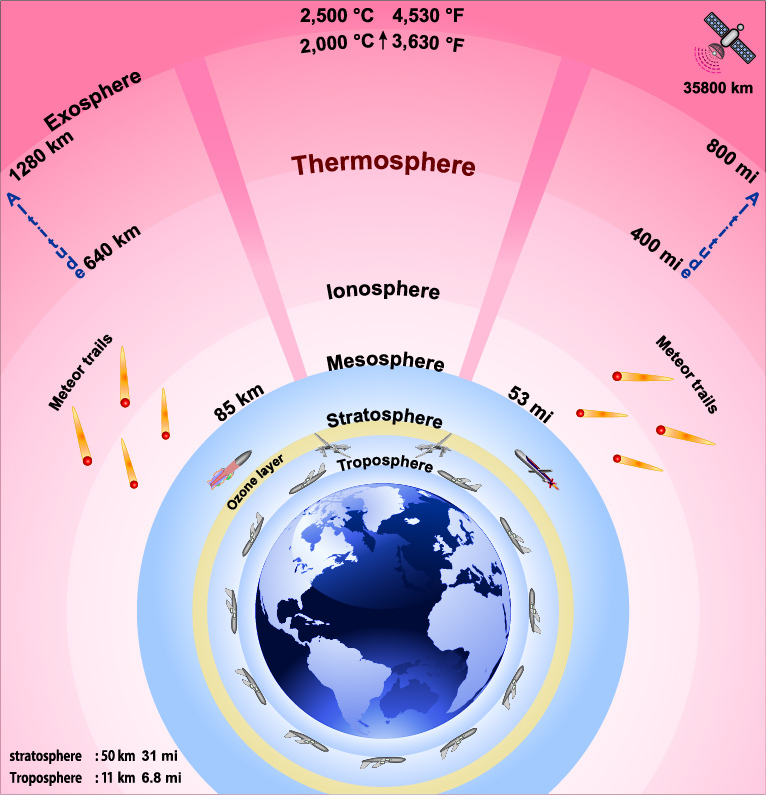
In upper layers of the atmosphere, a region of electro-magnetically charged plasma can be found, which could be used for spaceship propulsion. If found successful, this system could greatly reduce the dependency on booster rockets to send spacecraft to our outer atmosphere.
In Sum
Machines with moving components can only be optimized for frictional losses to a certain extent. Traditional methods of reducing frictional losses include the use of bearings and lubricants.
However, electromagnetism shows great potential for improving efficiency by completely eliminating moving components… but as with so many bits of cutting-edge science, only time will tell how this technology progresses!

